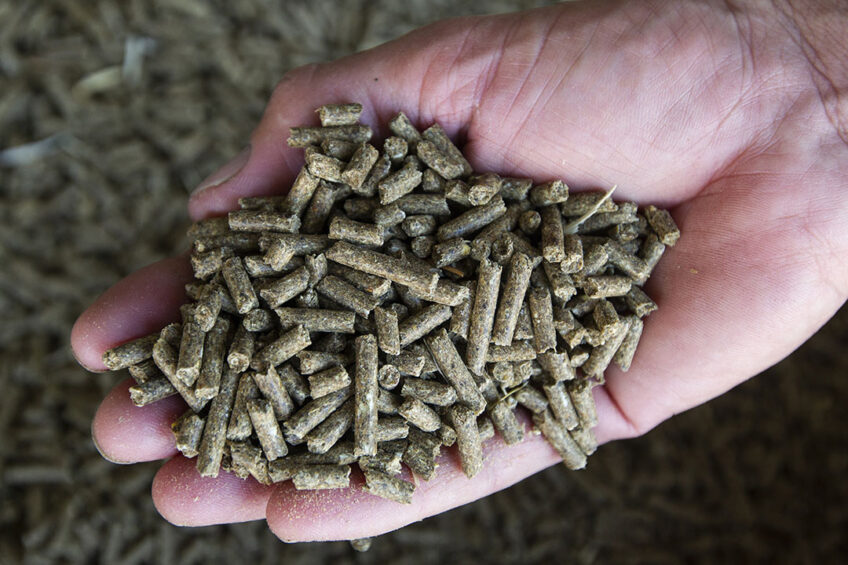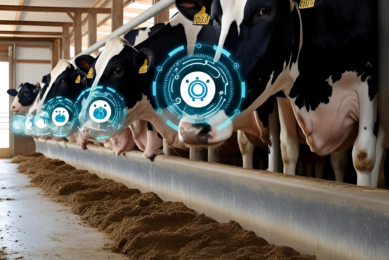Effects of feed processing on ruminant feed quality and utilisation

A review of the effects of various feed processing methods on feed quality and utilisation in ruminants.
Feed processing may be accomplished by physical, chemical, thermal, or other methods to alter the physical form or particle size, improve palatability or digestibility, and destroy the pathogenic agents and other harmful substances that may be present in feeds.
Processing becomes more important when maximum production is desired since heavily fed animals are more selective and because the utilisation tends to decrease as the level of feeding increases.
Effects of processing on dietary protein
In an early study, there was an increase of protein utilisation and amino acid absorption with pelleting even when the feed pellets are reground to the consistency of mash (Table 1). Such improvement, however, was noted mainly for wheat bran and wheat germ but not for cereal grains, and can be attributed almost entirely to the destruction of heat-labile toxic factors that impair digestion and utilisation of protein.
Dry heating (15 min at 120-I30 °C), also improves utilisation of dietary protein, due to the change in the structure of proteins (casein, fish meal, soybean meal, groundnut meal, cotton-seed meal) in such a way that the proteins became less soluble, thereby lowering the concentration of ammonia in the rumen and improving N balance in dairy cattle.
Impact on milk yield
In one study, heat treatment increased milk yield in early lactation from 26.8 to 30.8 ℓ/day without a change in milk protein content (2.84 % and 2.86 %, respectively) by the use of heated soybean meal, but no response was noted during the later weeks of lactation. Excessive heat treatment, however, can reduce the absorption of amino acids in the small intestine, despite an enhanced flow from the rumen compared with control untreated forage. The digestibility of protein within the small intestine was reduced from 72 % to 54 % with excessive heat treatment and processing.
Feed processing effects on dietary fat
The inclusion of fat in the diet negatively affects cows’ DMI due to an increase in ruminating time, reduced rate of rumen emptying, and the secretion of unidentified chemical mediators that have a satiety effect. Progress was, however, made in developing protected fats by which such problems can be alleviated. The following are the technologies that are currently adopted for these purposes:
Fat composite gels
Fat droplets are embedded here within the gelled protein matrix in which the lipids are protected against degradation, modification, or removal from the gel during passage through the rumen.
Calcium salts of long-chain fatty acids
These products are prepared by the reaction of the carboxyl group of long-chain fatty acids (LCFA) and calcium salts (Ca++). They have the highest intestinal digestibility and serve as an additional source of calcium.
In terms of animal production, it is well accepted that supplemental rumen-protected fat benefits the herd’s reproductive performance by minimising body weight loss and accelerating body weight gain after calving. A significant increase of 5.5-24.0% in FCM yield was also observed when feeding protected fat in early and peak lactation, probably due to the higher energy intake, more efficient use of fat by the mammary gland, and enhancement of tissue mobilisation before peak production. Economically, feeding protected fat to dairy animals has been shown to give a profit of US$ 1.3/ cow/ day, besides improvement in reproductive and lactation performance.
Feed processing effects on vitamins
In one study, the riboflavin content was higher when the corn was ground than when it was fed in intact form. Similar responses were noted with ground alfalfa hay, where the amount of thiamine synthesised in the rumen increased by 2-3 folds compared to that with intact alfalfa hay. The increased values found when feeding ground corn or alfalfa was due to the greater concentration of carbohydrates and water-soluble material per gram of dry ingested feed with a resulting increase in rumen bacterial growth.
Fine grinding should, however, be avoided for the following reasons:
The finer grind will be more subject to wind loss.
The finer grind may result in cattle going off feed (reduced palatability)
The finer grind tends to have a faster rate of passage through the digestive tract.
The finer grind may cause digestive disturbances
The finer grind for dairy cattle will result in lowered milk fat production
Pelleting, on the other hand, is typically the most aggressive process against vitamins due to exposure to heat. There is, however, little or no vitamin destruction with pelleting temperatures of up to 80 °C. At higher pelleting temperatures, chemical modification can decrease the stability of some vitamins such as vitamin C which is easily oxidised and destroyed in this case.
Processing effects on minerals
Grinding often improves feed intake and may also add metals to the feed. It was found, for example, that grinding of citrus pulp by Wiley mill significantly increased iron, zinc, copper, sodium, and manganese in the form of finely pulverised metals which may be better utilised than the same elements inherently present in the feed.
Processing effects on other substances in feed
Heat treatment of feeds was found to be beneficial, particularly in cases where ingredients such as cottonseed or soybean are incorporated into the diet. Heating such ingredients at 140-150 °C for 2-3 minutes leads to the destruction of the natural toxins and inhibitors present in the feed (free gossypol in cottonseed, trypsin inhibitors in soybean, and amygdalin in linseed) and hence improves their nutritional value.
Heat treatment of feed at 300 °C also appears to cause the decomposition of the aflatoxins, thereby making it harmless to animals. Alkali treatments applied at various stages of processing of oilseeds and meals may, in this case, increase the effectiveness of heat treatment. In a study on salmonella contamination of feeds, it was reported that heating naturally contaminated meat meals at 85°C for 7 minutes can destroy salmonella organisms. A similar response was noted when pelleting the feed material. In a study using 14 feed infected samples, it was also found that the 14 samples were negative for salmonella after pelleting.
References are available from the author upon request











